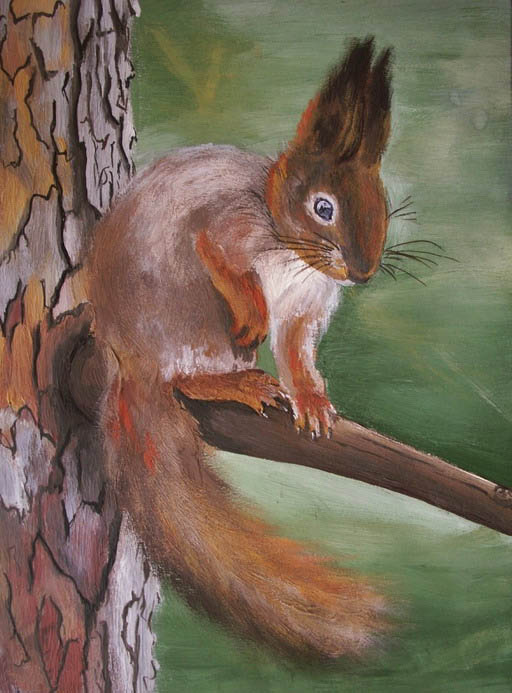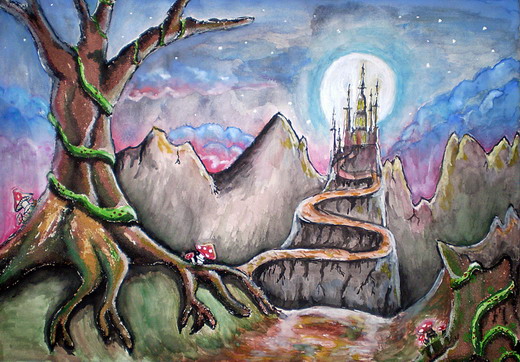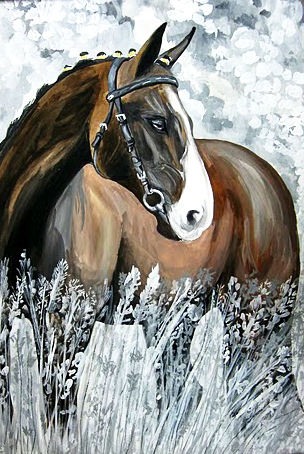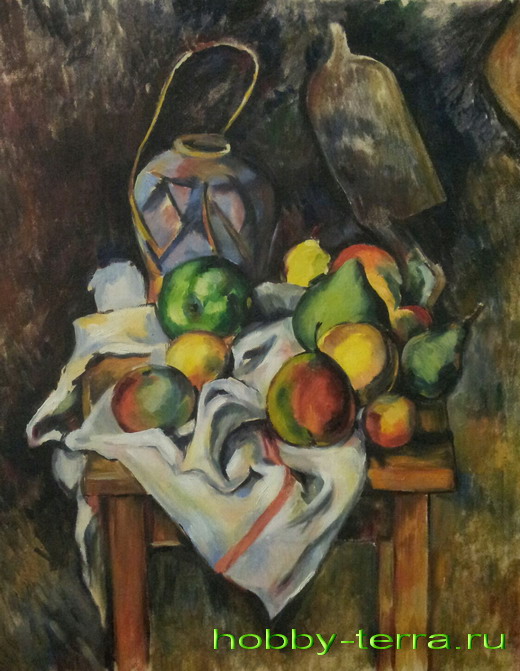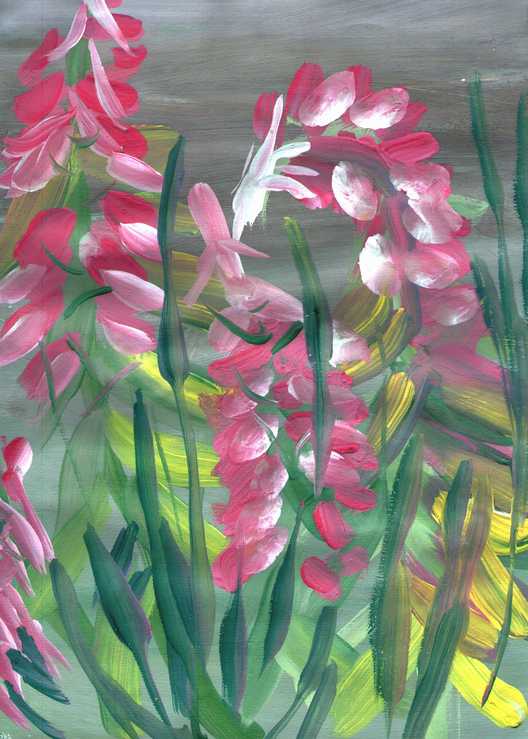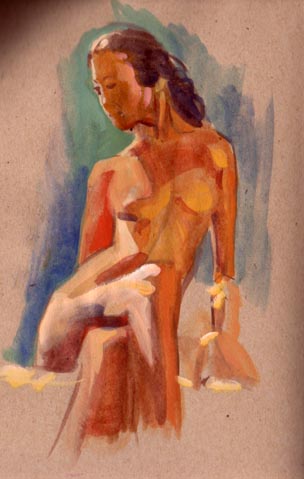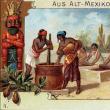Sections of the site
Editor's Choice:
- How to feed a hedgehog at home?
- How to make a poster with chocolates and inscriptions with your own hands?
- DIY hazel onions
- What you need for a picnic
- Pike head ear
- Rating of winter lures for perch
- How to salt pike caviar
- How to make cheese at home - recipe
- How to care for a hedgehog at home
- How to make a hunting bow with your own hands?
Advertising
| Gouache. Properties and types of gouache, techniques for working with gouache, suitable brushes and work surfaces. |
Most of us are used to treating gouache with a little disdain. It is believed that this material is suitable only for decoration and children's creativity, and it cannot be considered as a serious material for painting.Knights in gouache However, in the Middle Ages, in Europe, this material was widely used in writing miniatures, and not only for preparatory sketch work. In Russia, at the end of the 19th and the beginning of the 20th century, serious works of easel painting were painted with gouache. It was during this period that gouache flourished. Artists who have mastered this "frivolous" material to perfection create wonderful, graceful, uniquely velvety works. Especially wonderful, with the help of gouache, it is possible to convey the unique atmosphere of evening twilight and foggy predawn landscapes.
squirrel gouache There are several types of gouache: art, poster, acrylic and for children's creativity.Types of gouache. . Artistic gouache- these are crushed pigments, with the addition of distilled water, white and gum arabic. This gouache has excellent hiding power, matte, velvety and fits perfectly on the artistic surface. For this type of paint, uncoated cardboard, watercolor paper, tinted paper are ideal as a work surface. The first coat of paint is absorbed into the artistic surface, creating something like a primer. This allows the paint to adhere better to the work surface.
Fairy dragon castle in gouache Gouache properties and color features. Many people think that gouache is not convenient for drawing. If you have painted mainly with watercolors before, then you need to remember just a few rules in order to get the same wonderful result when working with gouache. Gouache paint is not transparent and contains whitewash. This means writing from dark to light, not vice versa. That is, having decided on the composition and color scheme, you need to start with darker tones of paint, and light reflections and dark color accents are placed at the end of the work. In order not to get confused about the possibility of mixing colors and shades, and also not to mess with the color for the shadows, it is better to have an idea of the color wheel that artists use. The colors lying in the adjacent sectors of the circle are mixed with each other without the formation of dirt, and for the shadows it is better to take the color from the opposite sector. This color is added in the required amount to the main tone. More often, for the image of the shadow, they take: blue, green or purple. In no case should you add black to the shadow image. Also, you cannot use black to obtain a darker tone of the same color, you will not darken the tone, but you will get dirt. Among other things, you should know that gouache dries quickly enough. If you make a mistake, then you cannot correct it until the gouache is dry. Breaking this rule will result in a smudged, dirty stain. You need to make changes and corrections to the drawing until the gouache layer has completely dried. Drying time usually depends on the thickness of the gouache layer, it varies from 30 minutes to 3 hours. When the gouache is dry, it is very easy to make changes. You just need to moisten the brush in warm and clear of pigment water, squeeze it slightly with a dry cloth and wipe off the paint in the place of the mistake with a light movement. In the same way, you can shade an overly clear outline of a drawn object. When mixing colors, you need to take into account that wet gouache is brighter. When it dries, it bleaches due to the presence of chalk in it. Therefore, colors should always be chosen more saturated than those that you want to see in the final work.
horse gouache Gouache brushes and brush strokes. The correct choice of brush will also help to facilitate familiarity with this art material. Since gouache is heavier and more viscous, overly soft brushes are not suitable for it, so it is better to put a light squirrel aside. Well suited for wet gouache: columns, goat and synthetics. These brushes are great for feathers, backgrounds and fills, that is, for working with a wet brush. There are painting techniques that are suitable for dry brushing. How to paint in gouache images of tree crowns, grassy backgrounds, objects with an uneven or textured surface? In this case, it is better to use bristle brushes. The shape of the brushes will depend on the shape of the brush strokes. It is better to depict the grass with flat brushes, and the crown of the trees with round ones. In this case, gouache diluted to a thickened sour cream is taken on a dry pork bristle brush and point blows are made with the brush on the working surface of the painting. It can be compared to sprinkling paint onto a work surface. How to paint with gouache not only with brushes. You can apply paint with a foam sponge, special rollers or a crumpled paper towel. All this allows you to depict objects with a complex surface structure and achieve a realistic image of many materials, for example, rough ceramics or stone, or painting a still life with gouache.
still life in gouache Painting techniques using gouache. Gouache lessons. There are two ways to create a gouache background:
flower gouache Gouache paintings. Gouache painting techniques include:
sketch of a girl in gouache Caring for the instrument when working with gouache. It is necessary to remember about the property of gouache to clog the pile of soft brushes, so it is better to rinse brushes immediately in a jar with plenty of warm water. To do this, rinse the brush thoroughly by running the pile along the bottom of the container with water. After finishing work with gouache, you need to rinse the brushes under a stream of warm running water. You also need to wash palettes with paint residues, since dried gouache can paint over the palette, especially if it is plastic. Gouache dries very quickly, so all paint cans should be tightly closed. If you leave unclosed cans of paint after work, then you risk finding there, instead of soft, plastic gouache, fossilized pieces of dried pigment. In addition, you need to monitor the condition of your paints. Gouache tends to thicken over time, even if you remember to cover it. This property of this material can lead to its complete drying. You can restore the original quality of the drying material by dropping half a teaspoon of hot boiled water into the paint (this is on a standard small jar). Then the gouache must be closed and left for 30 minutes, after which it must be thoroughly mixed with a stick or the opposite end of the brush. If your gouache has dried up to the state of a stone, then you can try to revive it, but this does not always work out. To do this, pour a little hot water into each jar, so that only a couple of millimeters cover the surface of the dried paint, and then put it in a warm place for three hours. In winter, a battery is suitable for this, and in summer a sunny windowsill. Then you need to mix the pigment thoroughly. If you still have dried pieces, you can try repeating the above procedure. If this does not help, then everything is over with your paint and can only be thrown away. True, it can be used as a dry watercolor for sketches and rough sketches. It is impossible to revive dried acrylic gouache; it turns into an insoluble, hard polymer. I wish you creative success in your work with gouache! |
| Read: |
|---|
New
- "Mahmud is in place, we can start" or interesting facts about the papakha
- I never took off my hat crossword clue
- Types of genres of literary works Large narrative work of fiction with a complex plot
- Compilation of Dramas Featuring Lee Jong Suk Films with Lee Jong Juice
- So Ji Soo Kim Ji Soo Drama
- Park Shin Hye - filmography, biography and personal life Where Pak Shin Hye is filmed
- How Perm people live now, who won millions on TV shows
- Does 21st Century India Need Castes?
- Violin post briefly
- Bach: biography in short for children Biography of bach johann sebastian in short for 6

